Abhijeet Sahu
Detection of False Data Injection Attacks (FDIA) on Power Dynamical Systems With a State Prediction Method
Sep 06, 2024



Abstract:With the deeper penetration of inverter-based resources in power systems, false data injection attacks (FDIA) are a growing cyber-security concern. They have the potential to disrupt the system's stability like frequency stability, thereby leading to catastrophic failures. Therefore, an FDIA detection method would be valuable to protect power systems. FDIAs typically induce a discrepancy between the desired and the effective behavior of the power system dynamics. A suitable detection method can leverage power dynamics predictions to identify whether such a discrepancy was induced by an FDIA. This work investigates the efficacy of temporal and spatio-temporal state prediction models, such as Long Short-Term Memory (LSTM) and a combination of Graph Neural Networks (GNN) with LSTM, for predicting frequency dynamics in the absence of an FDIA but with noisy measurements, and thereby identify FDIA events. For demonstration purposes, the IEEE 39 New England Kron-reduced model simulated with a swing equation is considered. It is shown that the proposed state prediction models can be used as a building block for developing an effective FDIA detection method that can maintain high detection accuracy across various attack and deployment settings. It is also shown how the FDIA detection should be deployed to limit its exposure to detection inaccuracies and mitigate its computational burden.
Discovery of False Data Injection Schemes on Frequency Controllers with Reinforcement Learning
Aug 30, 2024

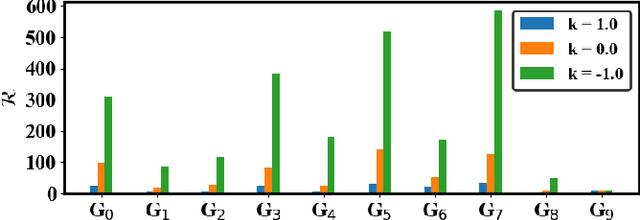
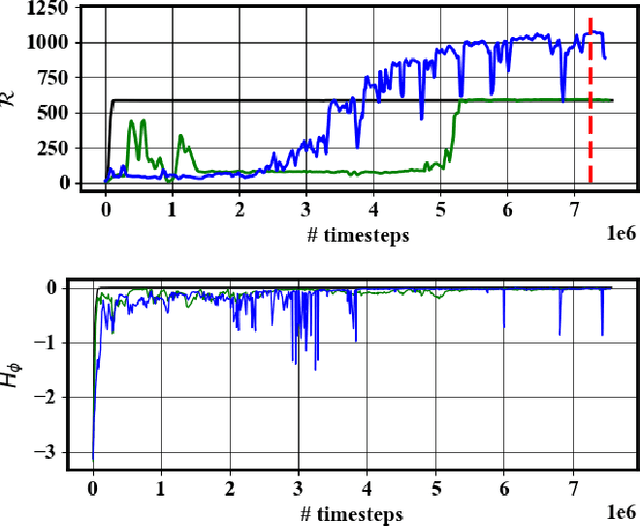
Abstract:While inverter-based distributed energy resources (DERs) play a crucial role in integrating renewable energy into the power system, they concurrently diminish the grid's system inertia, elevating the risk of frequency instabilities. Furthermore, smart inverters, interfaced via communication networks, pose a potential vulnerability to cyber threats if not diligently managed. To proactively fortify the power grid against sophisticated cyber attacks, we propose to employ reinforcement learning (RL) to identify potential threats and system vulnerabilities. This study concentrates on analyzing adversarial strategies for false data injection, specifically targeting smart inverters involved in primary frequency control. Our findings demonstrate that an RL agent can adeptly discern optimal false data injection methods to manipulate inverter settings, potentially causing catastrophic consequences.
BuildingsBench: A Large-Scale Dataset of 900K Buildings and Benchmark for Short-Term Load Forecasting
Jun 30, 2023Abstract:Short-term forecasting of residential and commercial building energy consumption is widely used in power systems and continues to grow in importance. Data-driven short-term load forecasting (STLF), although promising, has suffered from a lack of open, large-scale datasets with high building diversity. This has hindered exploring the pretrain-then-finetune paradigm for STLF. To help address this, we present BuildingsBench, which consists of 1) Buildings-900K, a large-scale dataset of 900K simulated buildings representing the U.S. building stock, and 2) an evaluation platform with over 1,900 real residential and commercial buildings from 7 open datasets. BuildingsBench benchmarks two under-explored tasks: zero-shot STLF, where a pretrained model is evaluated on unseen buildings without fine-tuning, and transfer learning, where a pretrained model is fine-tuned on a target building. The main finding of our benchmark analysis is that synthetically pretrained models generalize surprisingly well to real commercial buildings. An exploration of the effect of increasing dataset size and diversity on zero-shot commercial building performance reveals a power-law with diminishing returns. We also show that fine-tuning pretrained models on real commercial and residential buildings improves performance for a majority of target buildings. We hope that BuildingsBench encourages and facilitates future research on generalizable STLF. All datasets and code can be accessed from \url{https://github.com/NREL/BuildingsBench}.
Bayesian Reinforcement Learning for Automatic Voltage Control under Cyber-Induced Uncertainty
May 25, 2023Abstract:Voltage control is crucial to large-scale power system reliable operation, as timely reactive power support can help prevent widespread outages. However, there is currently no built in mechanism for power systems to ensure that the voltage control objective to maintain reliable operation will survive or sustain the uncertainty caused under adversary presence. Hence, this work introduces a Bayesian Reinforcement Learning (BRL) approach for power system control problems, with focus on sustained voltage control under uncertainty in a cyber-adversarial environment. This work proposes a data-driven BRL-based approach for automatic voltage control by formulating and solving a Partially-Observable Markov Decision Problem (POMDP), where the states are partially observable due to cyber intrusions. The techniques are evaluated on the WSCC and IEEE 14 bus systems. Additionally, BRL techniques assist in automatically finding a threshold for exploration and exploitation in various RL techniques.
Inter-Domain Fusion for Enhanced Intrusion Detection in Power Systems: An Evidence Theoretic and Meta-Heuristic Approach
Nov 20, 2021



Abstract:False alerts due to misconfigured/ compromised IDS in ICS networks can lead to severe economic and operational damage. To solve this problem, research has focused on leveraging deep learning techniques that help reduce false alerts. However, a shortcoming is that these works often require or implicitly assume the physical and cyber sensors to be trustworthy. Implicit trust of data is a major problem with using artificial intelligence or machine learning for CPS security, because during critical attack detection time they are more at risk, with greater likelihood and impact, of also being compromised. To address this shortcoming, the problem is reframed on how to make good decisions given uncertainty. Then, the decision is detection, and the uncertainty includes whether the data used for ML-based IDS is compromised. Thus, this work presents an approach for reducing false alerts in CPS power systems by dealing uncertainty without the knowledge of prior distribution of alerts. Specifically, an evidence theoretic based approach leveraging Dempster Shafer combination rules are proposed for reducing false alerts. A multi-hypothesis mass function model is designed that leverages probability scores obtained from various supervised-learning classifiers. Using this model, a location-cum-domain based fusion framework is proposed and evaluated with different combination rules, that fuse multiple evidence from inter-domain and intra-domain sensors. The approach is demonstrated in a cyber-physical power system testbed with Man-In-The-Middle attack emulation in a large-scale synthetic electric grid. For evaluating the performance, plausibility, belief, pignistic, etc. metrics as decision functions are considered. To improve the performance, a multi-objective based genetic algorithm is proposed for feature selection considering the decision metrics as the fitness function.
Graph Neural Networks Based Detection of Stealth False Data Injection Attacks in Smart Grids
Apr 05, 2021
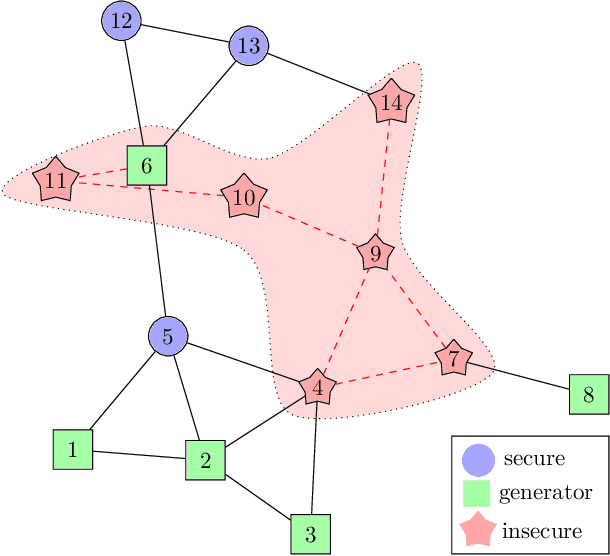
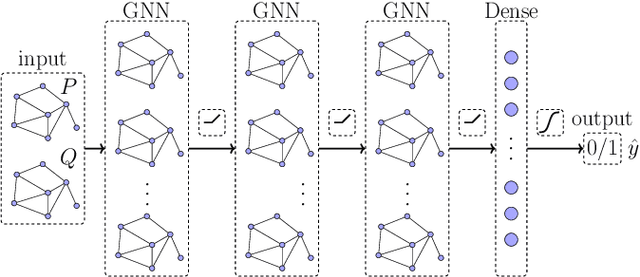
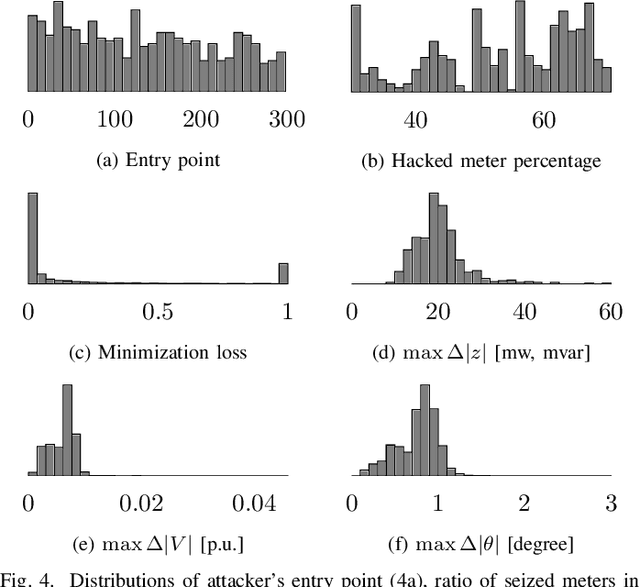
Abstract:False data injection attacks (FDIAs) represent a major class of attacks that aim to break the integrity of measurements by injecting false data into the smart metering devices in power grid. To the best of authors' knowledge, no study has attempted to design a detector that automatically models the underlying graph topology and spatially correlated measurement data of the smart grids to better detect cyber attacks. The contributions of this paper to detect and mitigate FDIAs are twofold. First, we present a generic, localized, and stealth (unobservable) attack generation methodology and a publicly accessible dataset for researchers to develop and test their algorithms. Second, we propose a Graph Neural Network (GNN) based, scalable and real-time detector of FDIAs that efficiently combines model-driven and data-driven approaches by incorporating the inherent physical connections of modern AC power grids and exploiting the spatial correlations of the measurement data. It is experimentally verified by comparing the proposed GNN based detector with the currently available FDIA detectors in literature that our algorithm outperforms the best available solutions by 6.21\%, 0.69\%, and 2.73\% in detection rate and by 3.65\%, 0.34\% and 1.38\% in F1 score for standard IEEE testbeds with 14, 118, and 300 buses, respectively.
Multi-Source Data Fusion for Cyberattack Detection in Power Systems
Jan 18, 2021



Abstract:Cyberattacks can cause a severe impact on power systems unless detected early. However, accurate and timely detection in critical infrastructure systems presents challenges, e.g., due to zero-day vulnerability exploitations and the cyber-physical nature of the system coupled with the need for high reliability and resilience of the physical system. Conventional rule-based and anomaly-based intrusion detection system (IDS) tools are insufficient for detecting zero-day cyber intrusions in the industrial control system (ICS) networks. Hence, in this work, we show that fusing information from multiple data sources can help identify cyber-induced incidents and reduce false positives. Specifically, we present how to recognize and address the barriers that can prevent the accurate use of multiple data sources for fusion-based detection. We perform multi-source data fusion for training IDS in a cyber-physical power system testbed where we collect cyber and physical side data from multiple sensors emulating real-world data sources that would be found in a utility and synthesizes these into features for algorithms to detect intrusions. Results are presented using the proposed data fusion application to infer False Data and Command injection-based Man-in- The-Middle (MiTM) attacks. Post collection, the data fusion application uses time-synchronized merge and extracts features followed by pre-processing such as imputation and encoding before training supervised, semi-supervised, and unsupervised learning models to evaluate the performance of the IDS. A major finding is the improvement of detection accuracy by fusion of features from cyber, security, and physical domains. Additionally, we observed the co-training technique performs at par with supervised learning methods when fed with our features.
 Add to Chrome
Add to Chrome Add to Firefox
Add to Firefox Add to Edge
Add to Edge